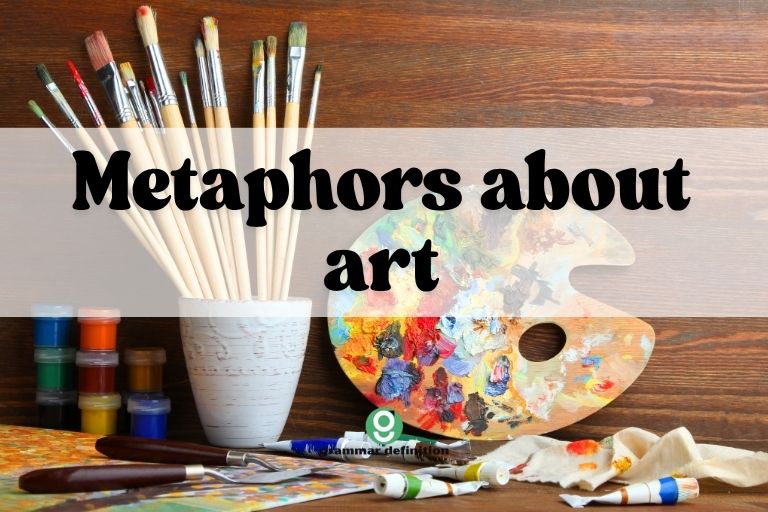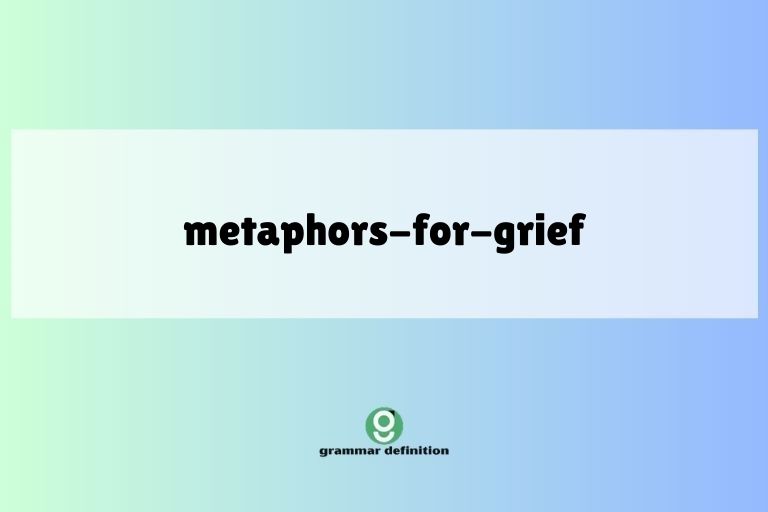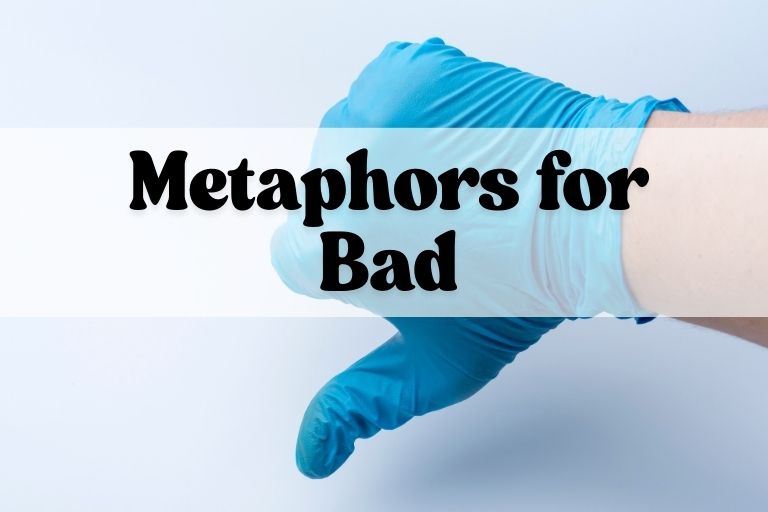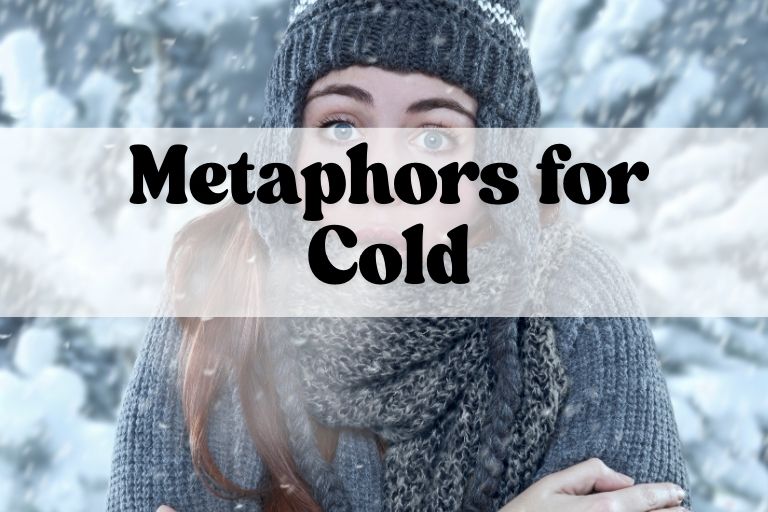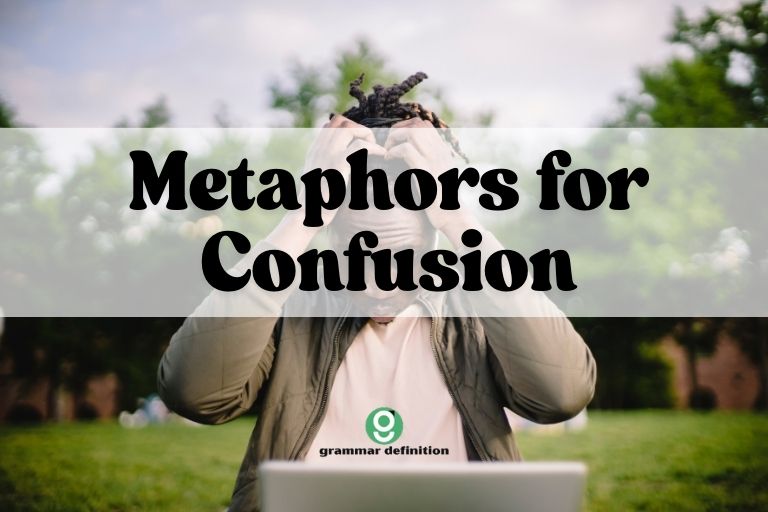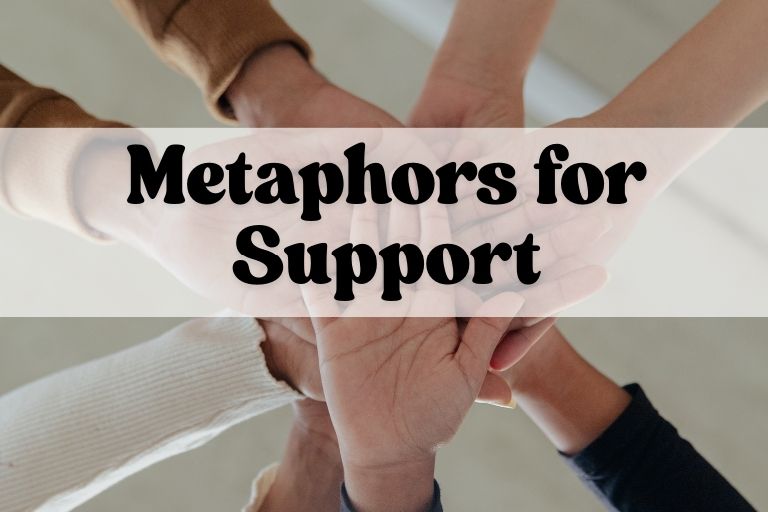Metaphors for Peace: A Grammatical Exploration
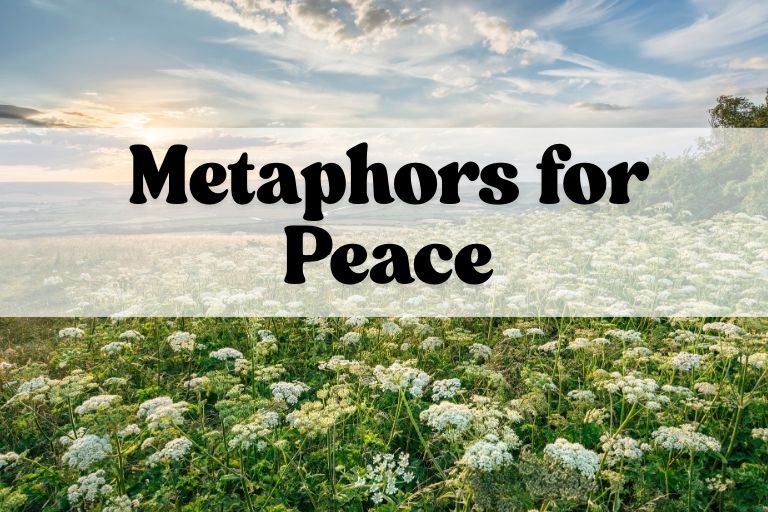
Metaphors are powerful tools in language, allowing us to understand abstract concepts by relating them to more concrete ideas. When it comes to peace, a concept often shrouded in complexity and aspiration, metaphors become particularly crucial.
Understanding how peace is metaphorically represented not only enriches our comprehension of its multifaceted nature but also enhances our ability to communicate about it effectively. This article delves into the grammatical aspects of metaphors for peace, exploring their structure, usage, and impact.
This guide will be useful for English language learners, writers, and anyone interested in the intersection of language and social understanding.
By examining various metaphors for peace, we will uncover the underlying assumptions and values they reflect. We will explore how these metaphors function grammatically, providing a framework for analyzing and constructing your own powerful expressions of peace.
Whether you are writing a speech, composing a poem, or simply engaging in everyday conversation, a deeper understanding of metaphors for peace will empower you to articulate your vision more clearly and persuasively. This article is designed to be accessible to learners of all levels, offering clear explanations, illustrative examples, and practical exercises to solidify your understanding.
Table of Contents
- Definition of Metaphor and Its Role in Understanding Peace
- Structural Breakdown of Metaphors
- Types of Metaphors for Peace
- Examples of Metaphors for Peace
- Usage Rules for Metaphors
- Common Mistakes When Using Metaphors
- Practice Exercises
- Advanced Topics: Extended Metaphors and Mixed Metaphors
- Frequently Asked Questions
- Conclusion
Definition of Metaphor and Its Role in Understanding Peace
A metaphor is a figure of speech that directly compares two seemingly unrelated things. It asserts that one thing *is* another, not literally, but in a way that reveals a shared quality or characteristic. Unlike similes, which use words like “like” or “as” to make comparisons, metaphors make a direct equation. The power of a metaphor lies in its ability to transfer meaning and create new understandings.
In the context of peace, metaphors play a crucial role in making this abstract concept more tangible and relatable. Peace is not something we can physically touch or see; it’s an idea, a state of being, a set of relationships.
By using metaphors, we can frame peace in terms of things we *can* understand, such as journeys, buildings, or health. These metaphors shape our perceptions and influence our actions, making them a powerful tool for promoting peace.
Metaphors for peace can be classified based on the conceptual domain they draw from. For example, some metaphors might draw from the domain of nature (e.g., “peace is a seed”), while others might draw from the domain of construction (e.g., “peace is a bridge”).
Understanding these different domains helps us appreciate the diverse ways in which peace can be conceptualized and pursued. Metaphors function by highlighting certain aspects of peace while downplaying others.
For instance, the metaphor “peace is a fragile flower” emphasizes the delicate nature of peace and the need for careful nurturing, whereas “peace is a strong fortress” emphasizes its resilience and protective qualities.
Structural Breakdown of Metaphors
Metaphors consist of two key elements: the tenor and the vehicle. The tenor is the subject being described (in our case, peace), and the vehicle is the object or concept used to describe it. The vehicle carries the meaning and transfers it to the tenor.
Consider the metaphor “Peace is a bridge.” Here, “peace” is the tenor, and “bridge” is the vehicle. The metaphor works because bridges are associated with connection, overcoming obstacles, and facilitating communication.
These qualities are then transferred to our understanding of peace. The structure of a metaphor can be simple or complex.
A simple metaphor is a direct equation, as in the example above. A more complex metaphor might involve multiple layers of meaning and imagery.
For example, “Peace is a tapestry woven from threads of understanding and compassion” is more complex, using “tapestry,” “threads,” “understanding,” and “compassion” as vehicles to convey the multifaceted nature of peace.
The effectiveness of a metaphor depends on the strength of the connection between the tenor and the vehicle. A strong metaphor creates a clear and compelling image in the mind of the listener or reader.
A weak metaphor, on the other hand, might be confusing or unconvincing. To create effective metaphors, it’s important to carefully consider the qualities you want to emphasize about peace and choose vehicles that strongly embody those qualities.
Also, consider your audience. What images and concepts will resonate with them?
What shared understandings can you draw upon to create a powerful and meaningful metaphor?
Types of Metaphors for Peace
Metaphors for peace can be categorized based on the conceptual domains they draw upon. Here are some common types:
Peace as a Journey
This type of metaphor portrays peace as a process, a path, or a destination. It emphasizes the effort and progress involved in achieving and maintaining peace.
The journey may be long and arduous, with obstacles and challenges along the way.
Peace as a Building
This metaphor frames peace as something that is constructed, requiring careful planning, strong foundations, and ongoing maintenance. It highlights the importance of collaboration, stability, and resilience.
Peace as Health
This metaphor equates peace with well-being, wholeness, and harmony. It emphasizes the importance of addressing the root causes of conflict and promoting healing and reconciliation.
This framing also suggests that conflict is a disease that needs to be cured.
Peace as Light
This metaphor associates peace with clarity, hope, and enlightenment. It contrasts with darkness, which represents ignorance, fear, and conflict.
Light illuminates the path to peace and guides us towards understanding and compassion.
Peace as Harmony
This metaphor depicts peace as a state of balance, cooperation, and mutual respect. It often draws upon musical or natural imagery to convey the idea of different elements working together in a pleasing and productive way.
It emphasizes the interconnectedness of all things and the importance of finding common ground.
Examples of Metaphors for Peace
The following tables provide examples of different types of metaphors for peace, illustrating their grammatical structure and conceptual meaning. Each table focuses on a specific category, offering a range of examples to demonstrate the versatility of metaphorical language.
The first table features metaphors that conceptualize peace as a journey. These metaphors highlight the process-oriented nature of peacebuilding and the challenges and rewards involved in the pursuit of peaceful coexistence.
They often emphasize the importance of perseverance, collaboration, and a clear sense of direction.
| Metaphor | Explanation |
|---|---|
| Peace is a long and winding road. | Emphasizes the challenges and unpredictable nature of achieving peace. |
| Peace is a journey of a thousand miles. | Highlights the dedication and persistence required to establish lasting peace. |
| Peace is a path we must walk together. | Stresses the importance of collaboration and shared effort. |
| Peace is a bridge across troubled waters. | Depicts peace as a way to overcome conflict and division. |
| Peace is a pilgrimage to understanding. | Highlights the importance of seeking knowledge and empathy. |
| Peace is the summit we strive to reach. | Presents peace as a challenging but ultimately achievable goal. |
| Peace is the map that guides us home. | Suggests that peace provides direction and purpose. |
| Peace is the compass pointing towards justice. | Links peace with fairness and equality. |
| Peace is the vehicle that carries us forward. | Depicts peace as a means of progress and advancement. |
| Peace is the voyage to a better world. | Frames peace as an ambitious and transformative endeavor. |
| Peace is a trail blazed through the wilderness of hate. | Highlights the effort required to overcome negativity and prejudice. |
| Peace is a river flowing towards reconciliation. | Suggests that peace is a natural and continuous process. |
| Peace is a flight soaring above the clouds of conflict. | Depicts peace as a way to transcend negativity and achieve a higher perspective. |
| Peace is a ladder leading to a brighter future. | Presents peace as a means of upward mobility and progress. |
| Peace is a dance requiring careful steps and coordination. | Emphasizes the need for precision and collaboration. |
| Peace is a marathon, not a sprint. | Highlights the long-term commitment required for lasting peace. |
| Peace is a treasure hunt, seeking understanding and empathy. | Presents peace as a rewarding and engaging pursuit. |
| Peace is a winding staircase leading to higher ground. | Suggests that peace requires effort and leads to improvement. |
| Peace is a cycle of learning and growth. | Emphasizes the continuous nature of peacebuilding. |
| Peace is a bridge connecting divided communities. | Highlights the role of peace in fostering unity and understanding. |
| Peace is a roadmap to a harmonious society. | Suggests that peace provides a clear plan for achieving social harmony. |
| Peace is a pathway paved with compassion and respect. | Emphasizes the importance of these values in building peace. |
| Peace is a journey into the heart of understanding. | Highlights the importance of empathy and inner reflection. |
| Peace is a quest for justice and equality. | Links peace with the pursuit of fairness and equal rights. |
The second table explores metaphors that frame peace as a building. These metaphors emphasize the importance of constructing a solid foundation for peace, highlighting the need for collaboration, careful planning, and ongoing maintenance.
They also suggest that peace, like a building, can be strong and resilient.
| Metaphor | Explanation |
|---|---|
| Peace is a strong foundation for a better future. | Emphasizes the importance of stability and long-term planning. |
| Peace is a building constructed brick by brick. | Highlights the gradual and collaborative nature of peacebuilding. |
| Peace is a house built on trust and respect. | Stresses the importance of these values in creating a stable peace. |
| Peace is a fortress protecting us from conflict. | Depicts peace as a source of security and protection. |
| Peace is the cornerstone of a just society. | Highlights the fundamental importance of peace in creating a fair and equitable society. |
| Peace is a shelter from the storm of war. | Presents peace as a safe haven and refuge. |
| Peace is the blueprint for a harmonious world. | Suggests that peace provides a plan for creating a better world. |
| Peace is the scaffolding that supports progress. | Depicts peace as a necessary structure for growth and development. |
| Peace is the mortar that binds communities together. | Emphasizes the unifying power of peace. |
| Peace is the roof that protects us all. | Presents peace as a source of collective security and well-being. |
| Peace is a carefully constructed edifice of diplomacy. | Highlights the role of negotiation and international relations in building peace. |
| Peace is a well-designed institution promoting justice and equality. | Emphasizes the importance of strong institutions in maintaining peace. |
| Peace is a rebuilt city rising from the ashes of war. | Depicts peace as a symbol of resilience and renewal. |
| Peace is a solid structure built on the pillars of human rights. | Highlights the importance of protecting and upholding human rights in the pursuit of peace. |
| Peace is a communal garden where understanding blossoms. | Presents peace as a shared space where growth and collaboration thrive. |
| Peace is a mosaic composed of diverse cultures and perspectives. | Emphasizes the importance of embracing diversity in building peace. |
| Peace is a tapestry woven with threads of empathy and forgiveness. | Highlights the role of these qualities in creating a harmonious society. |
| Peace is a monument to human resilience and hope. | Depicts peace as a lasting legacy of human strength and determination. |
| Peace is a lighthouse guiding ships safely through troubled waters. | Presents peace as a source of guidance and protection. |
| Peace is a bridge connecting divided shores. | Emphasizes the role of peace in fostering communication and understanding between different groups. |
| Peace is a table where everyone has a seat and a voice. | Suggests that peace requires inclusivity and equal participation. |
| Peace is a canvas where we paint a future of hope. | Depicts peace as an opportunity to create a better world. |
| Peace is a library filled with stories of understanding and reconciliation. | Highlights the importance of learning from the past and promoting empathy. |
| Peace is a symphony composed of diverse voices harmonizing together. | Emphasizes the beauty and power of unity in diversity. |
The third table showcases metaphors that relate peace to health. These metaphors emphasize the importance of well-being, harmony, and addressing the root causes of conflict.
They often suggest that conflict is a disease that needs to be cured, and that peace is a state of wholeness and balance.
| Metaphor | Explanation |
|---|---|
| Peace is a healthy society free from conflict. | Emphasizes the connection between peace and social well-being. |
| Peace is the cure for the disease of war. | Depicts peace as a remedy for conflict and violence. |
| Peace is a state of mental and emotional well-being. | Highlights the importance of inner peace and harmony. |
| Peace is the medicine that heals a divided nation. | Presents peace as a restorative force that can mend social divisions. |
| Peace is the therapy that helps us overcome trauma. | Suggests that peace can help us heal from the wounds of conflict. |
| Peace is the exercise that strengthens our social fabric. | Depicts peace as an active process that builds resilience and cohesion. |
| Peace is the nutrition that sustains a thriving community. | Emphasizes the importance of providing for the basic needs of all members of society. |
| Peace is the vaccine that prevents the spread of violence. | Presents peace as a protective measure that can prevent future conflicts. |
| Peace is the rehabilitation that helps us reintegrate after conflict. | Suggests that peace can help us rebuild our lives and communities after war. |
| Peace is a healthy ecosystem where all species thrive. | Depicts peace as a state of balance and harmony between all living things. |
| Peace is a healing balm soothing the wounds of the past. | Emphasizes the restorative power of peace in addressing past grievances. |
| Peace is a restorative process revitalizing broken relationships. | Suggests that peace can help mend fractured connections between people. |
| Peace is a state of equilibrium balancing justice and mercy. | Highlights the importance of finding a balance between these two values in building peace. |
| Peace is a vital organ essential for the health of society. | Depicts peace as a critical component of a functioning and thriving community. |
| Peace is a cleansing rain washing away the dirt of hatred and prejudice. | Presents peace as a purifying force that can eliminate negativity and bias. |
| Peace is a nourishing meal feeding the hungry souls of the oppressed. | Emphasizes the importance of addressing the needs of those who have suffered from injustice. |
| Peace is a soothing melody calming the restless hearts of the afflicted. | Suggests that peace can bring comfort and solace to those who have been harmed. |
| Peace is a gentle breeze dissipating the fog of misunderstanding and fear. | Depicts peace as a force that can clear away negative emotions and promote clarity. |
| Peace is a clear sky illuminating the path to reconciliation. | Presents peace as a source of guidance and hope for the future. |
| Peace is a fertile ground nurturing the seeds of compassion and empathy. | Emphasizes the importance of cultivating these qualities in building peace. |
| Peace is a vibrant garden where diversity flourishes in harmony. | Highlights the beauty and strength of unity in diversity. |
| Peace is a well-tuned instrument creating a symphony of cooperation. | Depicts peace as a collaborative effort that produces beautiful results. |
| Peace is a balanced diet nourishing the body, mind, and spirit. | Emphasizes the holistic nature of peace and its impact on all aspects of our lives. |
| Peace is a breath of fresh air invigorating a stagnant society. | Presents peace as a revitalizing force that can bring new life to a community. |
The fourth table focuses on metaphors that equate peace with light. These metaphors often convey the idea of clarity, hope, and enlightenment, contrasting with darkness, which represents ignorance, fear, and conflict.
Light illuminates the path to peace and guides us towards understanding and compassion.
| Metaphor | Explanation |
|---|---|
| Peace is a beacon of hope in a world of darkness. | Emphasizes the guiding and inspiring nature of peace. |
| Peace is the light that shines through the cracks of conflict. | Depicts peace as a source of hope even in the midst of adversity. |
| Peace is a ray of sunshine after a long storm. | Presents peace as a welcome relief after a period of conflict and hardship. |
| Peace is the dawn of a new era of understanding. | Suggests that peace marks the beginning of a better future. |
| Peace is the flame that ignites the spirit of cooperation. | Depicts peace as a catalyst for collaboration and unity. |
| Peace is a guiding star leading us towards justice. | Emphasizes the connection between peace and fairness. |
| Peace is the sunlight that nourishes the seeds of reconciliation. | Presents peace as a nurturing force that promotes healing and forgiveness. |
| Peace is a bright idea illuminating the path to a better world. | Depicts peace as a source of inspiration and innovation. |
| Peace is the glow that emanates from a compassionate heart. | Emphasizes the importance of empathy in building peace. |
| Peace is a candle that burns brightly against the winds of hatred. | Presents peace as a resilient force that can withstand negativity. |
| Peace is a luminous path guiding us through the darkness of despair. | Highlights the role of peace in providing hope and direction during difficult times. |
| Peace is a radiant smile brightening the faces of those who have suffered. | Depicts peace as a source of joy and comfort for those who have been harmed. |
| Peace is a shining star illuminating the way to a just and equitable society. | Emphasizes the connection between peace and social justice. |
| Peace is a beacon of understanding piercing through the fog of ignorance. | Presents peace as a force that can dispel misinformation and promote clarity. |
| Peace is a gentle light fostering growth and harmony in a troubled world. | Depicts peace as a nurturing and balancing influence. |
| Peace is a clear vision guiding us towards a future free from conflict. | Emphasizes the importance of having a clear sense of purpose in the pursuit of peace. |
| Peace is a warm embrace radiating love and compassion to all. | Presents peace as a force that can bring people together and foster empathy. |
| Peace is a bright horizon promising a new beginning for humanity. | Depicts peace as a symbol of hope and renewal. |
| Peace is a spark of hope igniting the flame of change. | Emphasizes the potential of peace to inspire positive action. |
| Peace is a clear voice resonating with messages of unity and understanding. | Presents peace as a powerful tool for communication and connection. |
| Peace is a luminous tapestry woven with threads of kindness and empathy. | Highlights the importance of these values in creating a harmonious society. |
| Peace is a shining shield protecting us from the arrows of hatred and violence. | Depicts peace as a source of security and protection. |
| Peace is a bright mirror reflecting the best of humanity back to itself. | Emphasizes the potential of peace to reveal our shared values and aspirations. |
| Peace is a radiant aura surrounding those who strive for justice and equality. | Presents peace as a reward for those who work towards a better world. |
Usage Rules for Metaphors
When using metaphors, it’s important to follow certain rules to ensure clarity and effectiveness:
- Choose relevant vehicles: The vehicle should have a clear and logical connection to the tenor. Avoid metaphors that are too abstract or obscure.
- Maintain consistency: Avoid mixing metaphors that create contradictory or confusing images.
- Consider your audience: Choose metaphors that will resonate with your audience and that they will easily understand.
- Avoid clichés: Overused metaphors can lose their impact. Try to create fresh and original comparisons.
- Be mindful of cultural context: Some metaphors may have different meanings or connotations in different cultures.
Common Mistakes When Using Metaphors
Here are some common mistakes to avoid when using metaphors:
| Mistake | Incorrect Example | Correct Example |
|---|---|---|
| Mixed Metaphor | The ship of peace sailed into a brick wall. | The ship of peace sailed into calm waters. |
| Cliché | Peace is a light at the end of the tunnel. | Peace is a lighthouse guiding ships safely through troubled waters. |
| Inappropriate Vehicle | Peace is a microwave oven. | Peace is a warm blanket on a cold night. |
| Overuse of Metaphors | Peace is a river, and war is a fire, and hope is a bird, and… | Peace is a river flowing towards reconciliation. |
Practice Exercises
Test your understanding of metaphors for peace with these exercises. Identify the tenor and vehicle in each metaphor, and explain the connection between them.
Then, create your own metaphors for peace using different conceptual domains.
Exercise 1: Identify the Tenor and Vehicle
| Question | Answer |
|---|---|
| Peace is a seed that must be nurtured. | Tenor: Peace; Vehicle: Seed |
| Peace is a bridge connecting divided communities. | Tenor: Peace; Vehicle: Bridge |
| Peace is a song that everyone can sing. | Tenor: Peace; Vehicle: Song |
| Peace is a dance requiring careful steps. | Tenor: Peace; Vehicle: Dance |
| Peace is a book filled with stories of understanding. | Tenor: Peace; Vehicle: Book |
| Peace is a mountain we must climb together. | Tenor: Peace; Vehicle: Mountain |
| Peace is a puzzle we must solve together. | Tenor: Peace; Vehicle: Puzzle |
| Peace is a garden where understanding blossoms. | Tenor: Peace; Vehicle: Garden |
| Peace is a shield against the arrows of hatred. | Tenor: Peace; Vehicle: Shield |
| Peace is a treasure we must protect. | Tenor: Peace; Vehicle: Treasure |
Exercise 2: Create Your Own Metaphors
Create 10 original metaphors for peace, using different conceptual domains (e.g., nature, technology, art). Explain the connection between the tenor (peace) and the vehicle in each metaphor.
Example: Peace is a well-composed symphony, where different instruments (cultures, perspectives) harmonize to create a beautiful and unified whole. (Domain: Art)
Possible Answers:
- Peace is a network of interconnected nodes, where communication flows freely and understanding is shared. (Domain: Technology)
- Peace is a fertile field where empathy and compassion can take root and flourish. (Domain: Nature)
- Peace is a carefully crafted sculpture, where each element (justice, equality, forgiveness) contributes to the overall beauty and strength of the whole. (Domain: Art)
- Peace is a flowing river, carrying away the debris of conflict and nourishing the land with hope. (Domain: Nature)
- Peace is a powerful computer, processing information and finding solutions to complex problems. (Domain: Technology)
- Peace is a vibrant mural, celebrating the diversity and beauty of human experience. (Domain: Art)
- Peace is a gentle rain, cleansing the earth and allowing new life to emerge. (Domain: Nature)
- Peace is a sophisticated algorithm, analyzing data and predicting potential conflicts before they escalate. (Domain: Technology)
- Peace is a captivating novel, telling stories of courage, resilience, and reconciliation. (Domain: Art)
- Peace is a vast ocean, connecting different continents and cultures through shared currents of understanding. (Domain: Nature)
Advanced Topics: Extended Metaphors and Mixed Metaphors
Extended Metaphors: An extended metaphor is a metaphor that is developed over several lines or even an entire work. It allows for a more in-depth exploration of the relationship between the tenor and the vehicle. For example, you could extend the “peace is a journey” metaphor by describing the different stages of the journey, the challenges encountered along the way, and the rewards of reaching the destination.
Mixed Metaphors: A mixed metaphor combines two or more metaphors that are inconsistent or contradictory. This can create a confusing or humorous effect, but it is generally avoided in formal writing. For example, “Let’s nip this in the bud before it snowballs” combines the metaphor of pruning a plant with the metaphor of a snowball rolling downhill. A better construction would be “Let’s address this issue before it escalates.”
Frequently Asked Questions
- What is the difference between a metaphor and a simile?
A metaphor directly equates two things, while a simile uses “like” or “as” to make a comparison. For example, “Peace is a bridge” (metaphor) versus “Peace is like a bridge” (simile).
- Why are metaphors important in discussions about peace?
Metaphors make the abstract concept of peace more tangible and relatable. They help us understand different aspects of peace and communicate about it more effectively.
- How can I create effective metaphors for peace?
Choose relevant vehicles that have a clear connection to peace. Consider your audience and the qualities you want to emphasize. Avoid clichés and be mindful of cultural context.
- What is a mixed metaphor, and why should I avoid it?
A mixed metaphor combines two or more inconsistent metaphors, creating a confusing image. It’s best to maintain consistency in your metaphorical language.
- Can metaphors for peace be used in different languages?
Yes, but it’s important to consider cultural differences and adapt the metaphors accordingly. Some metaphors may not translate well or may have different connotations in other languages.
- How do metaphors for peace influence our understanding of conflict resolution?
Metaphors shape our perceptions of conflict and influence our approaches to resolution. For example, if we view conflict as a disease, we might focus on treating the symptoms rather than addressing the root causes.
- What are some ethical considerations when using metaphors for peace?
Avoid using metaphors that could be offensive or insensitive to certain groups. Be mindful of the power of language and use it responsibly to promote understanding and empathy.
- How can I improve my ability to understand and use metaphors for peace?
Read widely, pay attention to how metaphors are used in different contexts, and practice creating your own metaphors. The more you engage with metaphorical language, the better you will become at understanding and using it effectively.
Conclusion
Metaphors for peace are powerful tools that shape our understanding and communication of this complex concept. By understanding the structure, types, and usage rules of these metaphors, we can create more effective and meaningful expressions of peace.
From viewing peace as a journey to seeing it as a building, health, light, or harmony, each metaphor offers a unique perspective and highlights different aspects of this multifaceted idea.
Remember to choose your metaphors carefully, considering their relevance, consistency, and cultural context. Avoid common mistakes such as mixed metaphors and clichés.
By practicing your skills and exploring advanced topics such as extended metaphors, you can unlock the full potential of metaphorical language to promote peace and understanding in the world. Continue to explore diverse metaphors and consider the values they convey to deepen your insight and inspire others to pursue a more peaceful world.

